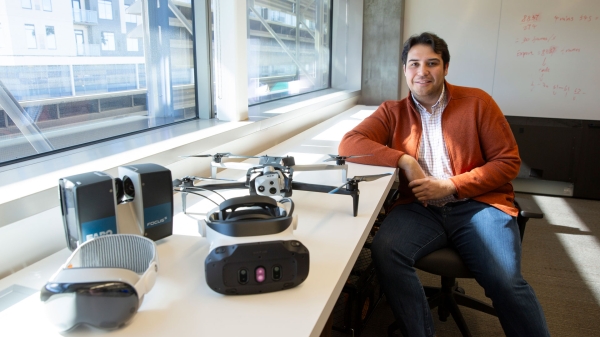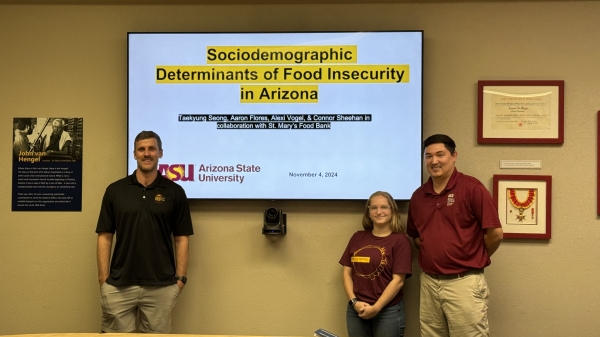Broadening diversity in biodiversity science

Young students participating in biodiversity science research.
In August 2015, the ASU Center for Biodiversity Outcomes Founding Director Leah Gerber and graduate student affiliate Beth Tellman from the School of Geographical Sciences and Urban Planning organized a panel titled “Expanding diversity in the next generation of ecology.” This event attracted dozens of minority students who have led a paper just out in Science titled “Without inclusion, diversity initiatives might not be enough.”
Fewer young people are pursuing conservation science degrees and working in their professions after graduation — even as platforms to increase diversity persist. What is behind this disconnect?
Insights on this question are numerated in the Science article. The paper reveals that, while the unique challenges minority youth experience that impede academic success are well-documented, it is not clear that this knowledge is integrated effectively in diversity initiatives. The panel also found a disproportionate amount of attention is given to undergraduate diversity, there are significantly less programs for graduate students which is a “strategic point of loss” for students entering Science, Technology, Engineering and Math (STEM) careers.
Although recruiting and matriculating diverse students is a step in the right direction, the publication argues that it is not enough — steps must be taken beyond increasing diversity to advancing inclusion.
While diversity refers to numbers and differences within a group, inclusion speaks to how minority students are treated and feeling within an institution. This distinction is critical to increasing minority students in STEM, as it focuses on the “unintentional implicit biases” that influence institutional culture and impede success. “Transitioning from diversity to inclusion requires acknowledging that structural bias and social justice impacts scientists as people, and that this has consequences for the science they do,” the paper argues.
To tackle pressing conservation problems, it is essential to understand the social problems that threaten biodiversity. Problems that are only framed from a single viewpoint miss valuable insights that can become key guiding questions driving research and real-world applications forward.
“This publication highlights our commitment to diversity and inclusion in biodiversity science,” explained Gerber. “The event was transformative for all who attended, and inspired a diverse group of students to share insights more broadly.”
The Center for Biodiversity Outcomes is developing novel education programs that provide environmental and ecological sustainability literacy focused on underrepresented youth.
Its proposed Diversity in Biodiversity Science program expects to engage undergraduate and graduate students, develop its diversity network at ASU through campus engagement events and work with non-profit partners to deepen the connections with high schools.
The center has been collaborating with the ASU Center for Gender Equity in Science and Technology to develop a university wide summer STEM diversity program, of which conservation science will be one focus.
“Concurrently, we are developing partnerships with The Nature Conservancy and Conservation International to target underserved youth, specifically in Arizona schools and get them into ASU where we can mentor them through the program,” explained Gerber.
Gerber and Project Manager Amy Scoville-Weaver currently lead the center’s education and diversity efforts, but the opportunities in this area exceed its capacity to engage. The center is currently seeking $25-50,000 to develop the program framework.
Committing institutional support, programs and resources to diversity and inclusion will continue to allow ASU to identify promising underserved high school students, recruit them, mentor them and provide professional opportunities with conservation organizations, leading into successful and impactful careers in conservation science and policy.
More Science and technology

Teaching construction realities with virtual environments
Visiting a construction site is a valuable learning opportunity for students who want to one day work in the industry.…
ASU, Mexico partner to build next generation of chipmakers, drive semiconductor innovation
Thousands of college students in Mexico will soon have the opportunity to enroll in Arizona State University’s new, free online…

ASU, St. Mary’s Food Bank partner to tackle food insecurity in Arizona
Arizona State University and St. Mary’s Food Bank (SMFB) have joined forces to create an interactive data dashboard that tracks…